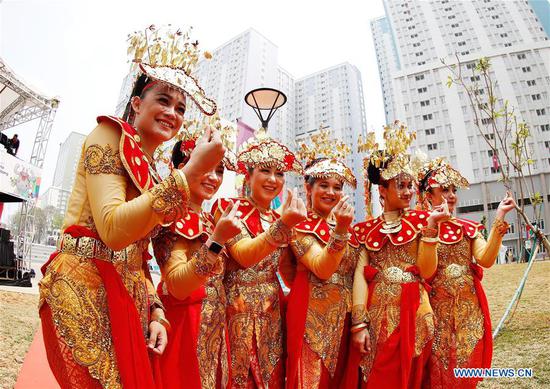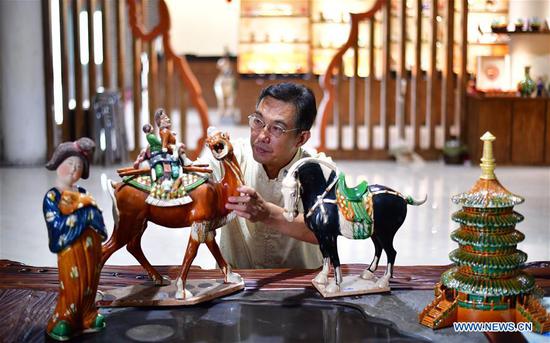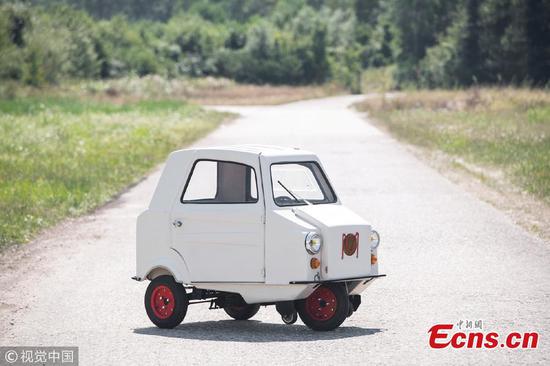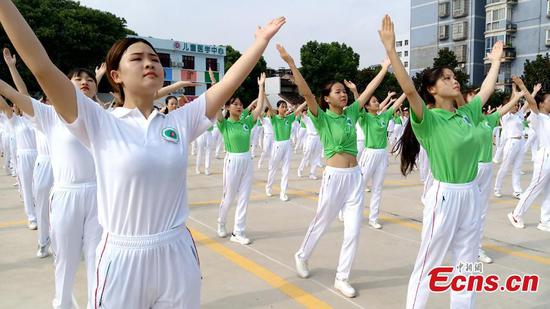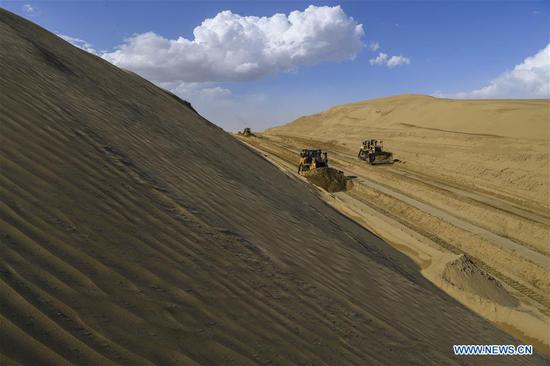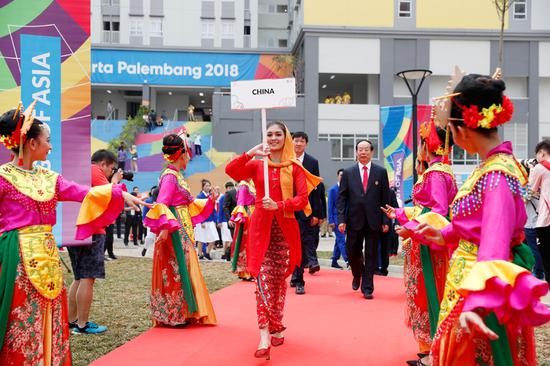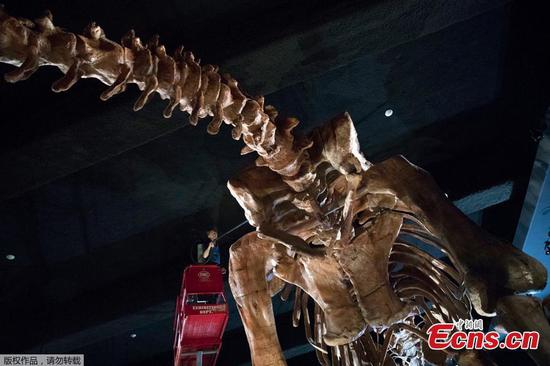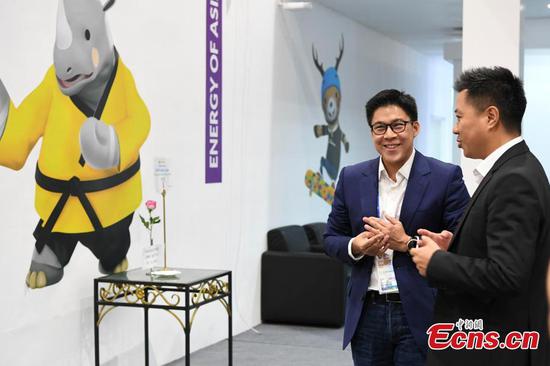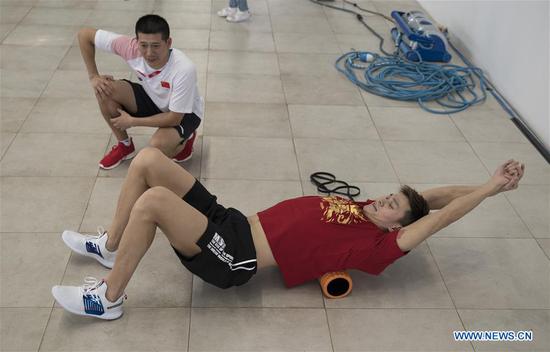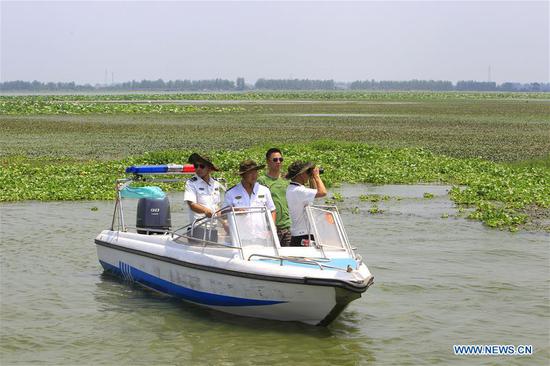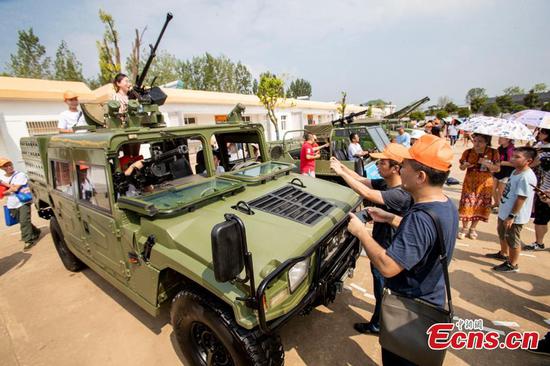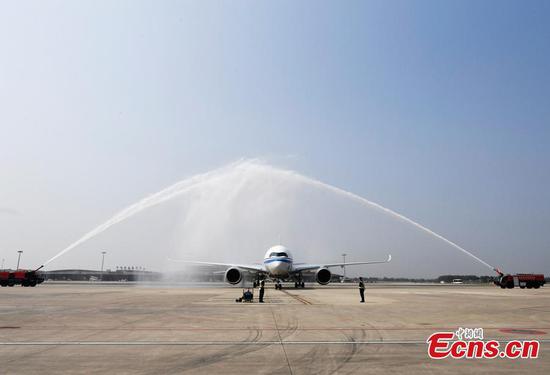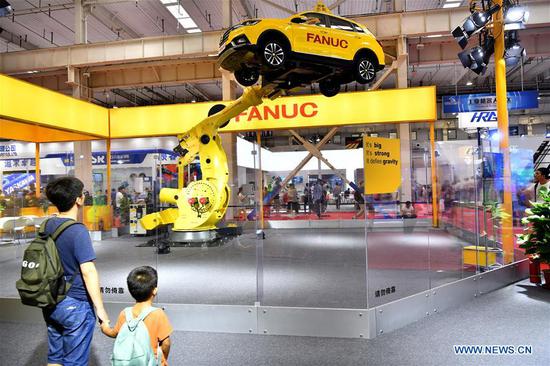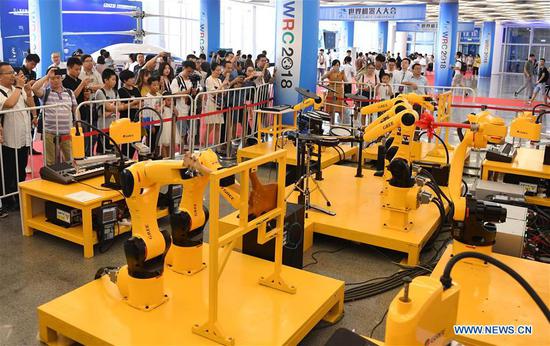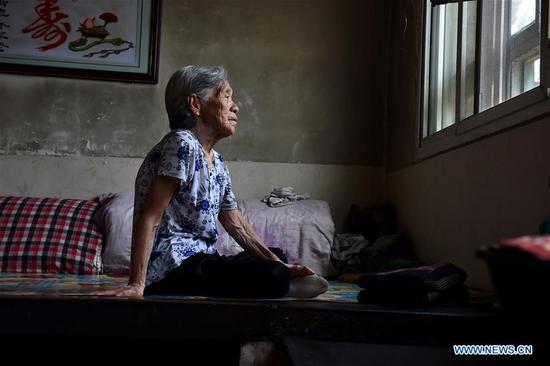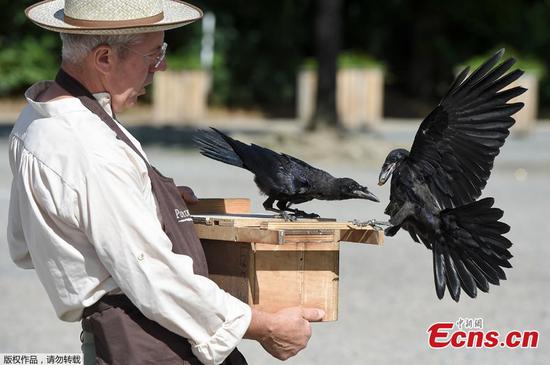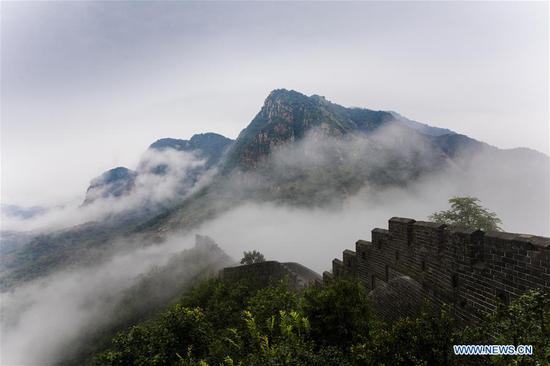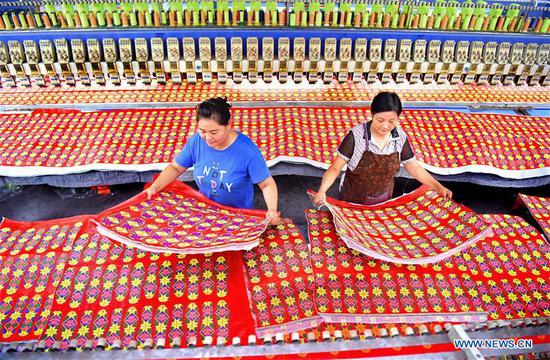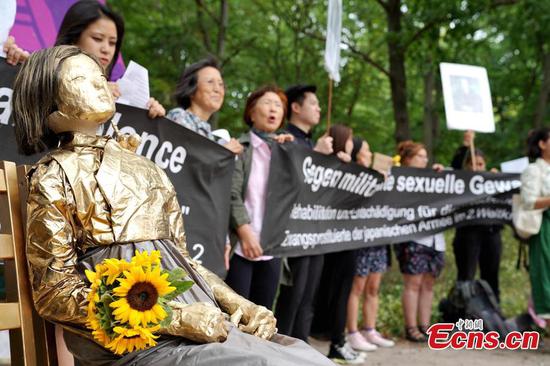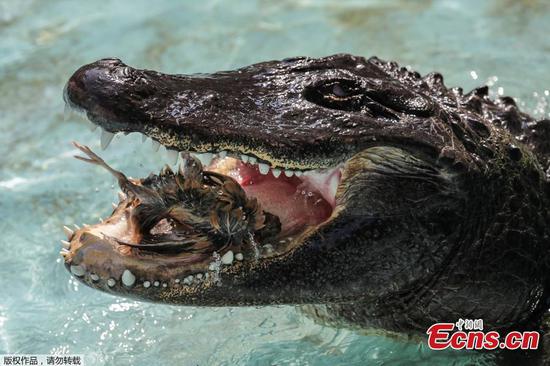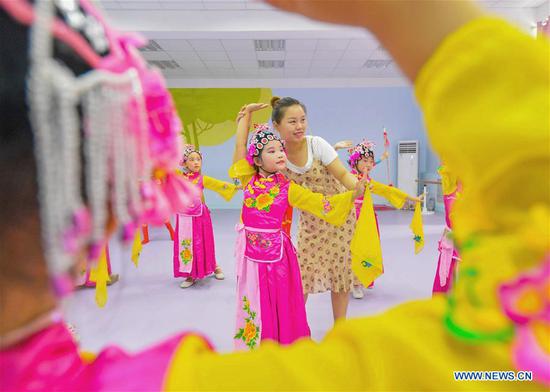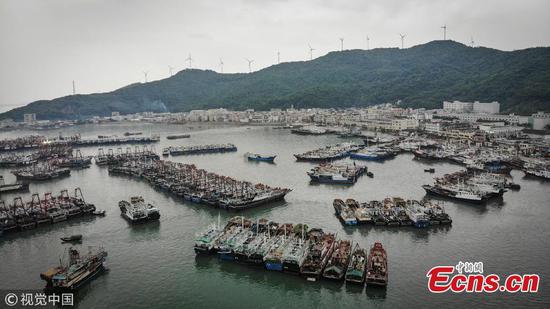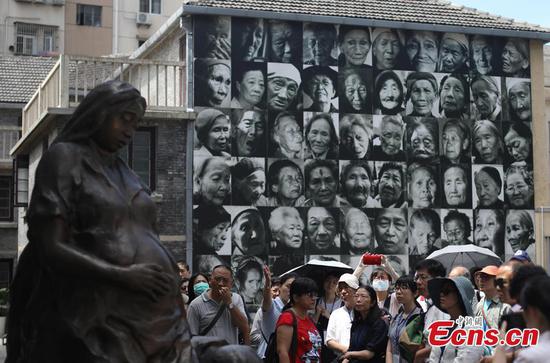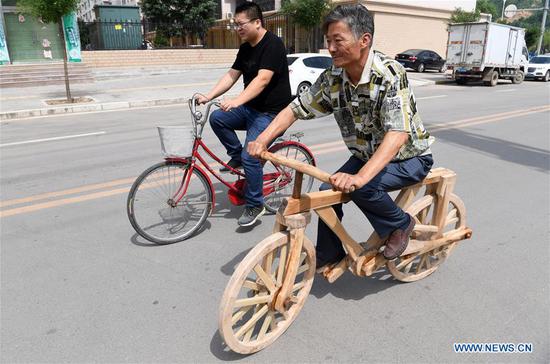
A visitor tries an intelligent bicycle at the 2018 National Sports Industry Development Conference held in Xiamen, Fujian Province. (Photo/Xinhua)
Inside the Shanghai IAPM Mall, one of the city's most luxurious and high-end shopping venues, Skechers, the sportswear brand from the United States, has just launched its new boutique D'Lites, featuring hip-pop culture and street art to appeal to young consumers.
For Skechers, the second quarter of 2018 turned out to be robust for its business in China as it sold 5.6 million pairs of shoes during the period, breaking its own seasonal sales record, according to David Weinberg, the company's chief operating officer.
This June the company announced that the compound growth rate of its sales revenue in China over the past 10 years reached 73 percent. It also aims to have 3,100 shops in China by the end of 2018, up from 2,339 in 2017.
"We expect sales to top 15 billion yuan ($2.2 billion) in China by 2018," said Willie Tan, CEO of the company's Asia-Pacific region.
The fast expansion of Skechers reflects China's growing sportswear consumption. Indeed, the demand for sports-related products and services is growing, and insiders predict 2018 will see explosive growth in the industry.
Earlier this month, Ou Xiaoli, director general of social development at the National Development and Reform Commission said the sports industry is expected to be a new driver of the country's economy, predicting that it will top 1 trillion yuan by the end of 2018, with the number of the related companies increasing by a fifth. The industry will also provide jobs for more than 4.4 million people.
Ou said the industrial structure has seen continued upgrades with added value from the service side contributing more than 50 percent of the entire industry's added value. The growth rate of casual sports, fitness and sports competition business also exceeded 20 percent.
Another booming business area is marathons, which have gained popularity in recent years across the country. According to a report by the Chinese Athletic Association, the number of marathons with more than 800 participants has increased fiftyfold from 22 in 2011 to 1,102 in 2017.
"Marathons have become the most influential and popular activity in China," said Yu Hongchen, vice-president of the CAA. The association also predicted that by 2020, the country will host 1,900 marathons and the industry's size will grow to 120 billion yuan.
Developing a sports industry is also on the agenda for Chinese regional governments. In July, Hainan Province secured 35 billion yuan of investment in its sports industry park in Sanya, including a water sports town, two premium themed hotels, sports parks, and games and competitions.
"Being the new pilot free trade zone has brought Hainan a rare opportunity to develop its culture and sports industry," said Lin Guangqiang, head of the Hainan Provincial Department of Culture, Radio, Film, Television, Publication and Sports. "Through this investment promotion, a number of key projects will be launched to meet people's growing consumption demand for sports and culture."
In early August, Jiangsu Province also released four documents on the development of its water, aviation, outdoor and snow sports.
"As incomes increase, more and more people are looking for exciting entertainment and sports activities, and it has created a great opportunity for the province to develop water sports," the government document said.
The private capital markets have also been active in sports-related investment.
According to Newseed's database, a service company for startups and investors, from April to early August there were 17 financing activities in sports-related companies attracting more than 5.9 billion yuan.
Suning Sports, the sports branch of e-commerce giant Suning, alone netted $600 million in its A-round financing, while Ali Sports, Alibaba's sports branch, and iQiyi Sports, online entertainment service provider iQiyi's sports channel, attracted 1.2 billion yuan and 500 million yuan's respectively.










